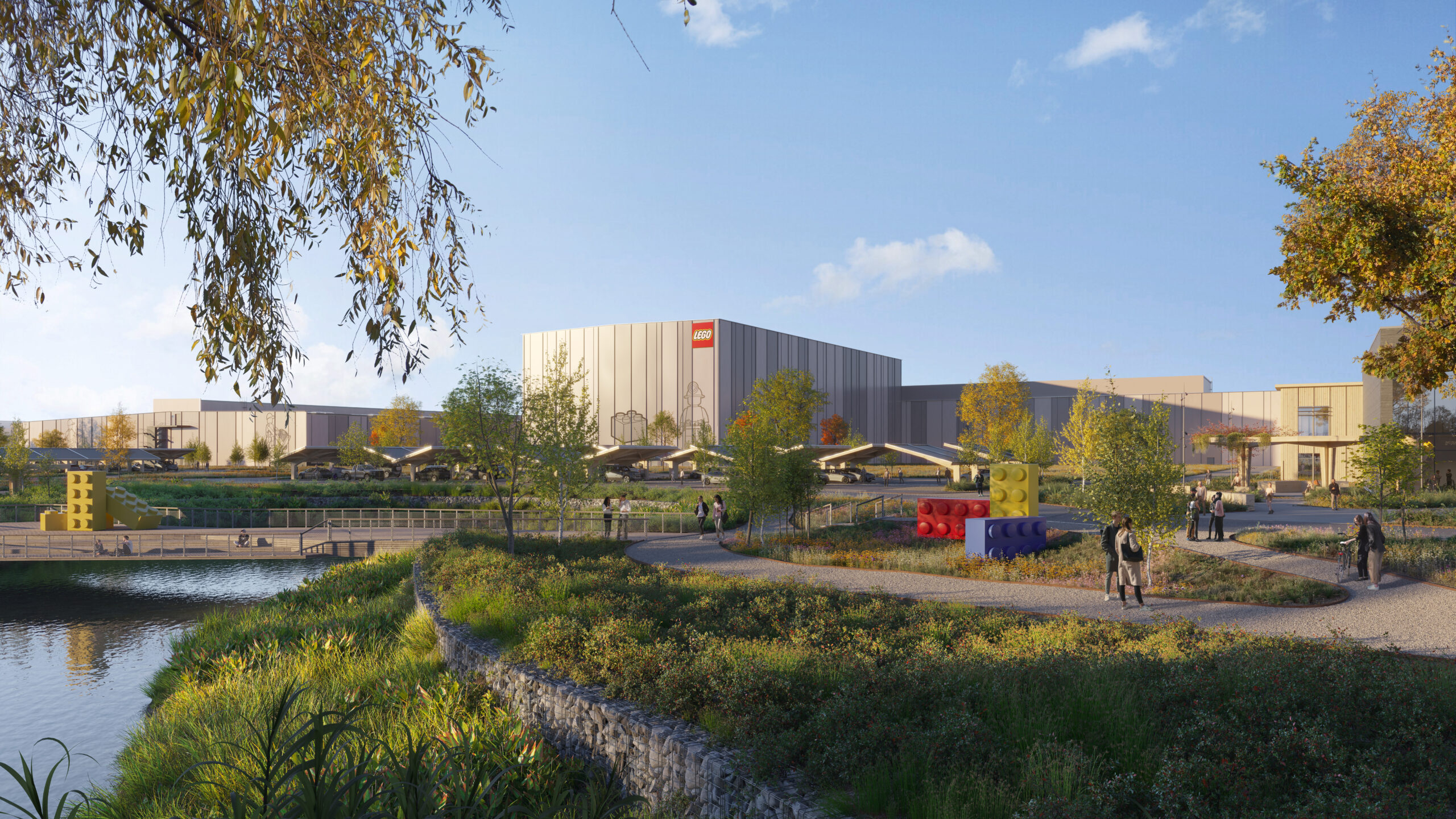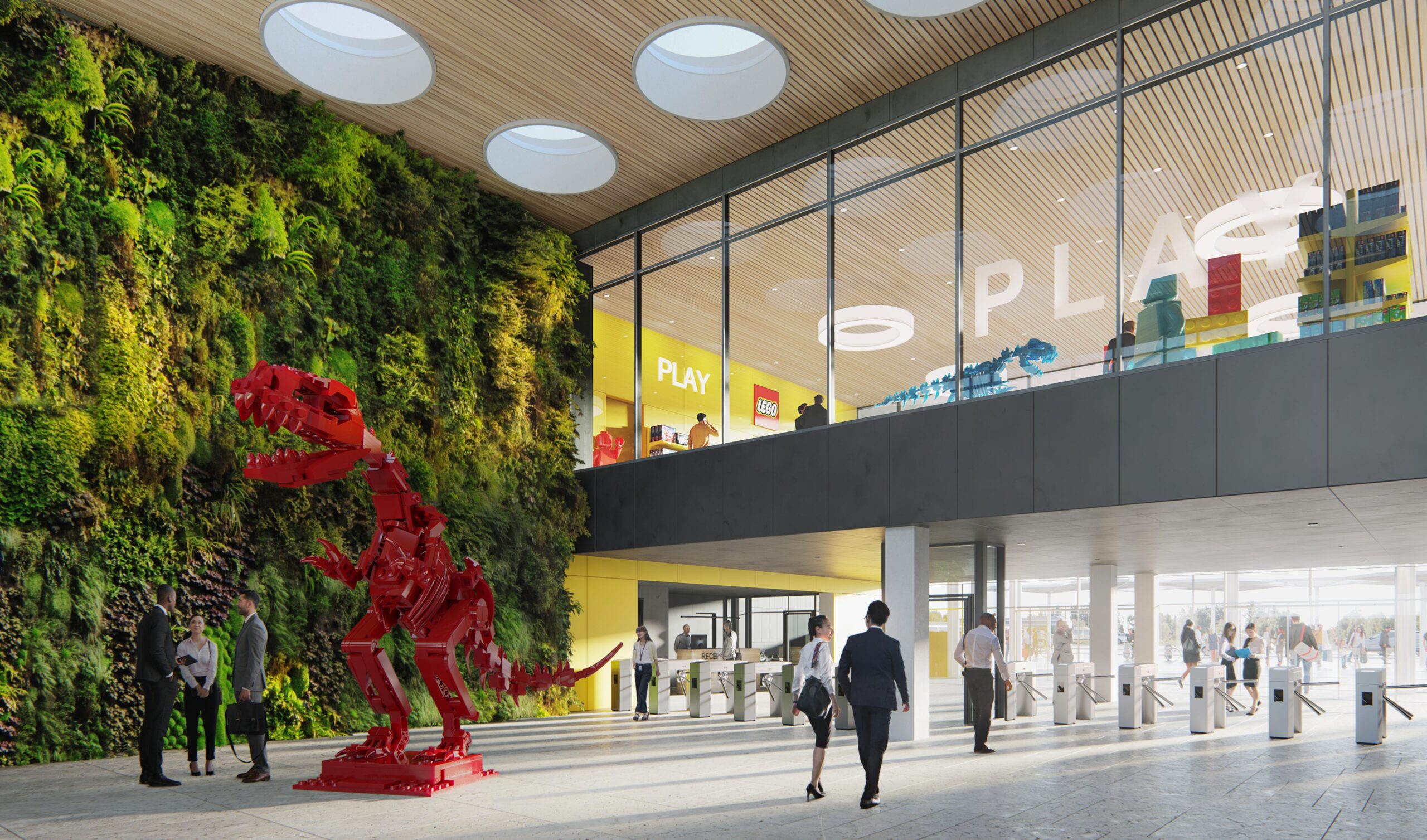The LEGO Group
The LEGO Group does not really need an introduction. Almost everybody has, at some point in life, built things with LEGO®’s colourful bricks. Less well known is the fact that the company is also very active with ‘real’ bricks. Currently, the company is building a 160.000 square meters production facility in the US and another one of 150.000 square meters in Vietnam. Production facilities at other locations are being upgraded and expanded.
Engineer Morten Henriksen plays a vital role in all these projects as he is responsible for the LEGO Group’s construction requirements. Morten is happy to tell us more about why and how he and his colleagues are using BriefBuilder in their work.
Can you explain a bit more about your work?
My key responsibility is to manage our set of global construction specifications, making sure that they are updated, approved, and applied in our projects.
It is a challenging job because we have a lot of specifications. A LEGO® factory isn’t just an empty shell with machinery in it. It is a complex building type that is almost like a lab. It has to be built according to strict requirements concerning logistics, sustainability, production conditions and staff safety.

Impression of the LEGO Group’s future 160.000 sqm production facility in Virginia (US), which is being designed and engineered by Arkitema/COWI. The factory will be designed to operate as a carbon-neutral facility. 100 percent of its day-to-day energy needs will be matched by renewable energy generated by an onsite solar park. The site will also be designed to minimise energy consumption and use of non-renewable resources. Photo: courtesy of The LEGO Group.
Another crucial part of my job is to think about, and plan for, the future expansion of our production capacity. In our team, we must think 10 years ahead because building a new factory is a long process. There may be several years in between the selection of a site and, ultimately, the completion of the building.
Why are you using BriefBuilder?
The main reason for using Briefbuilder is that we want to be in control of our specifications. As mentioned earlier, we have lots of specifications. I am responsible for the construction specifications, but my MEP colleagues also have plenty of specifications. And, on top of that, there are always lots of stakeholders involved—each with their own demands and wishes.
Earlier, we used Word and Excel to keep track of all that. But that meant that specifications were scattered over different documents. It was difficult to maintain overview, difficult to ensure consistency, and difficult to keep track of changes. BriefBuilder solves many of these problems, thereby giving us a better grip on our specifications.
The main reason for using Briefbuilder is that we want to be in control of our specifications

Interior of a production facility. As Morten explains, these facilities are complex buildings, accommodating state-of-the-art technology to mould, process and pack LEGO products. Their design has to ensure that LEGO’s products meet the company’s rigorous safety and quality requirements. Photo: courtesy of The LEGO Group.
How do project teams respond to this way of working?
Well, it is a new way of working, so you will always meet some resistance. Overall, however, BriefBuilder was very well received. In particular when people start working with the application, the benefits quickly become clear to them.
What also helped, is the possibility to define specific data overviews in BriefBuilder. This means that you can provide specialists with very specific overviews that contain the specific information they need.
Internally, completing the BriefBuilder Fundamentals course was also very helpful. By doing the course, we became aware that we aren’t using all of BriefBuilder’s features yet. But we are taking it step-by-step, which is crucial when implementing a new way of working.
BriefBuilder was very well received. In particular when people start working with the application, the benefits quickly become clear to them
What is your favorite feature in BriefBuilder?
I am particularly happy with the ability to track changes and the RFC (request for change) module. In today’s construction market, it is critical to be in full control over the scope of your project. Construction prices are pretty insane. So, to be able to make a realistic budget, and hold on to that, you need a solid baseline and to manage possible changes in a systematic way.
In today’s construction market, it is critical to be in full control over the scope of your project
Any recommendations for other construction clients?
My recommendation is to be aware of the complexity of dealing with specifications in large projects. In the type of projects that we are working on, there are so many objectives, so many opinions and so many ideas. You need to capture all that to be able to manage it. You need clarity about what has been agreed. And that’s where BriefBuilder comes in.
You need clarity about what has been agreed. And that’s where BriefBuilder comes in

Artist impression of LEGO’s new factory in Vietnam, by COWI/Arkitema. The new factory will be constructed with an aim to meet a minimum standard of LEED Gold, which covers all areas of sustainability including energy, water, and waste. The factory will be designed to accommodate electric vehicles and be outfitted with energy efficient production equipment. Photo: courtesy of The LEGO Group.
Many thanks to Morten for sharing his insights!
More information about The LEGO Group’s construction projects across the world can be found here

